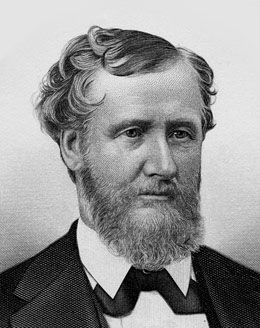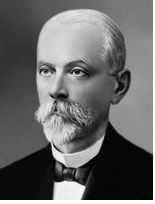Elie Metchnikoff was a Russian biologist, zoologist and protozoologist who is best remembered for his pioneering research work into the immune system, specific cells and organs of the body (e.g. white blood cells, spleen, antibodies and thymus) which protect it from diseases and infectious agents. An associate of Louis Pasteur,
Elie coined the word “phagocytosis” – to mean “the eating of cells (particularly microbial cells” by a special type of white blood cells called phagocytes.
Phagocytes are specific cells of the body (e.g. white blood cells) which can surround and destroy other pathogenic cells (e.g. bacteria). Metchnikoff demonstrated in his works that certain body cells (which he called phagocytes) moved to damaged areas of the body where they eat invading bacteria.
He called the process phagocytosis, and proposed the theory of cellular immunity. Though his theory that certain white blood cells could engulf and destroy harmful bodies such as bacteria where greeted by skepticism from other scientist including Louis Pasteur, Elie Metchnikoff was awarded the Nobel Prize for medicine or physiology in 1908 for his work on phagocytes.
Elie formulated the basic theory on which the foundation of immunology lies, by accounting that the body is protected from infection by leukocytes that engulf bacteria and other invading organisms (a process called cellular immunity). Elie Metchnikoff is often referred as the father of immunology because of his innovative work on the immune system of higher organisms.
References
Barrett J.T (1998). Microbiology and Immunology Concepts. Philadelphia, PA: Lippincott-Raven Publishers. USA.
Beck R.W (2000). A chronology of microbiology in historical context. Washington, D.C.: ASM Press.
Brooks G.F., Butel J.S and Morse S.A (2004). Medical Microbiology, 23rd edition. McGraw Hill Publishers. USA. Pp. 248-260.
Chung K.T, Stevens Jr., S.E and Ferris D.H (1995). A chronology of events and pioneers of microbiology. SIM News, 45(1):3–13.
Wainwright M (2003). An Alternative View of the Early History of Microbiology. Advances in applied microbiology. Advances in Applied Microbiology, 52:333–355.
Willey J.M, Sherwood L.M and Woolverton C.J (2008). Harley and Klein’s Microbiology. 7th ed. McGraw-Hill Higher Education, USA.
Discover more from Microbiology Class
Subscribe to get the latest posts sent to your email.





